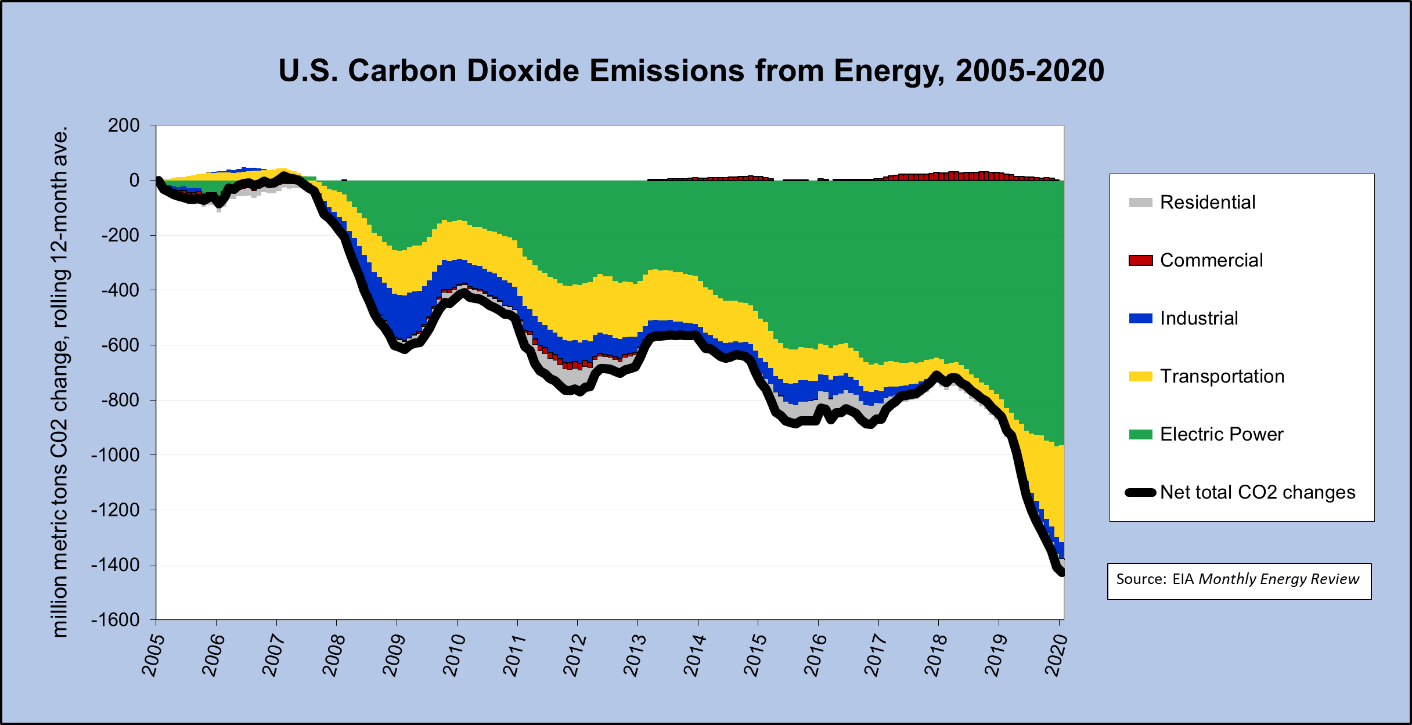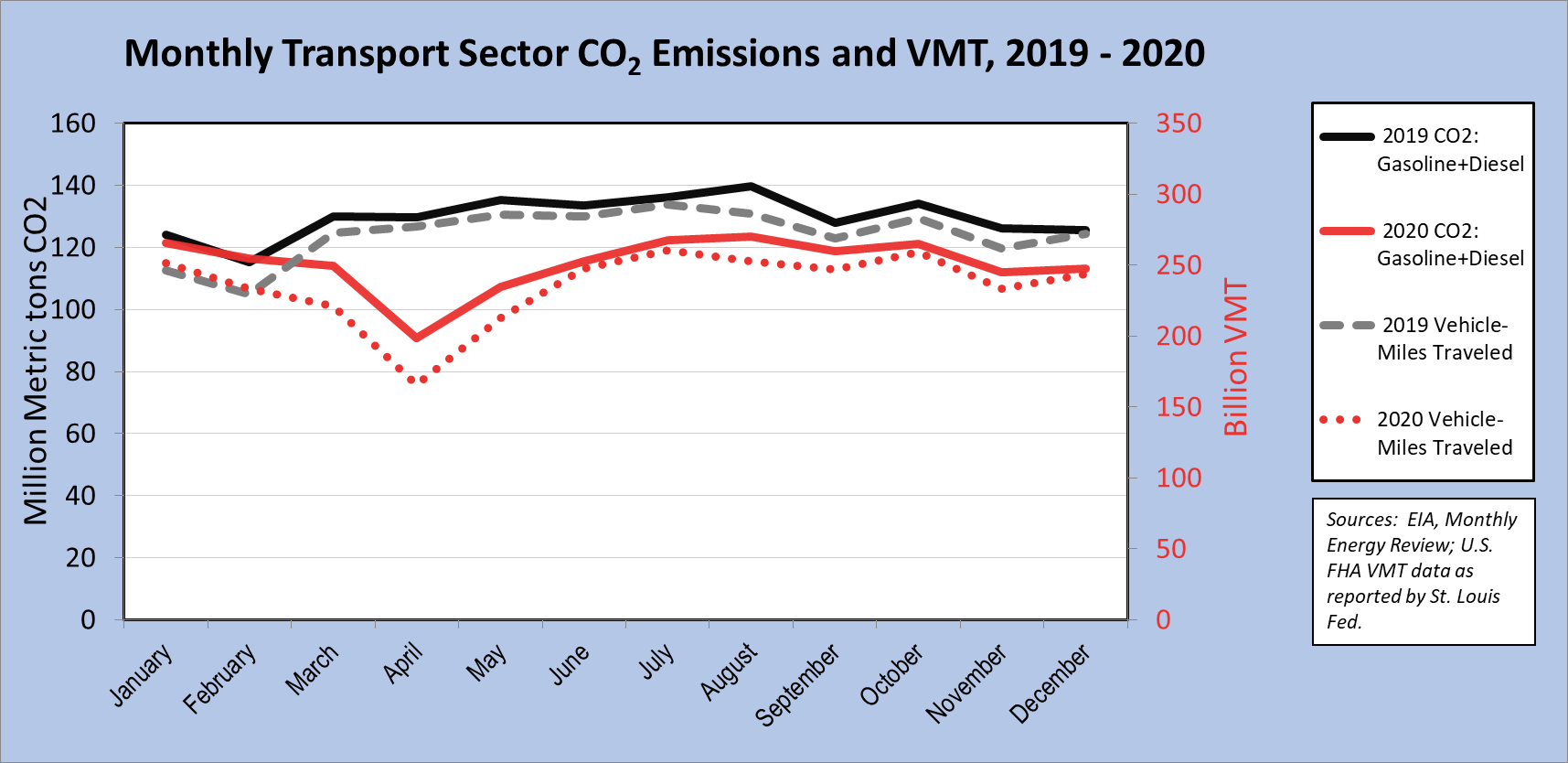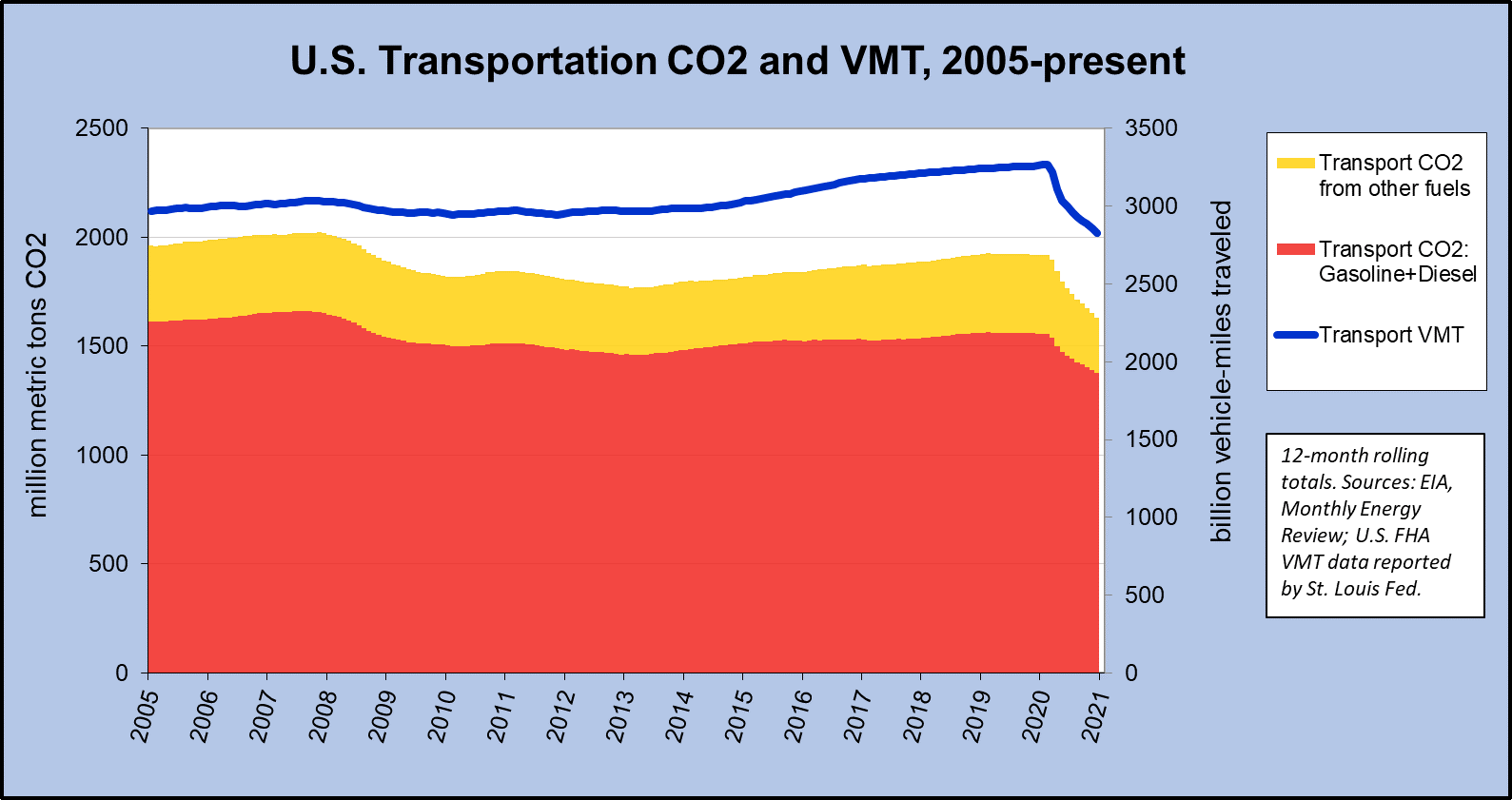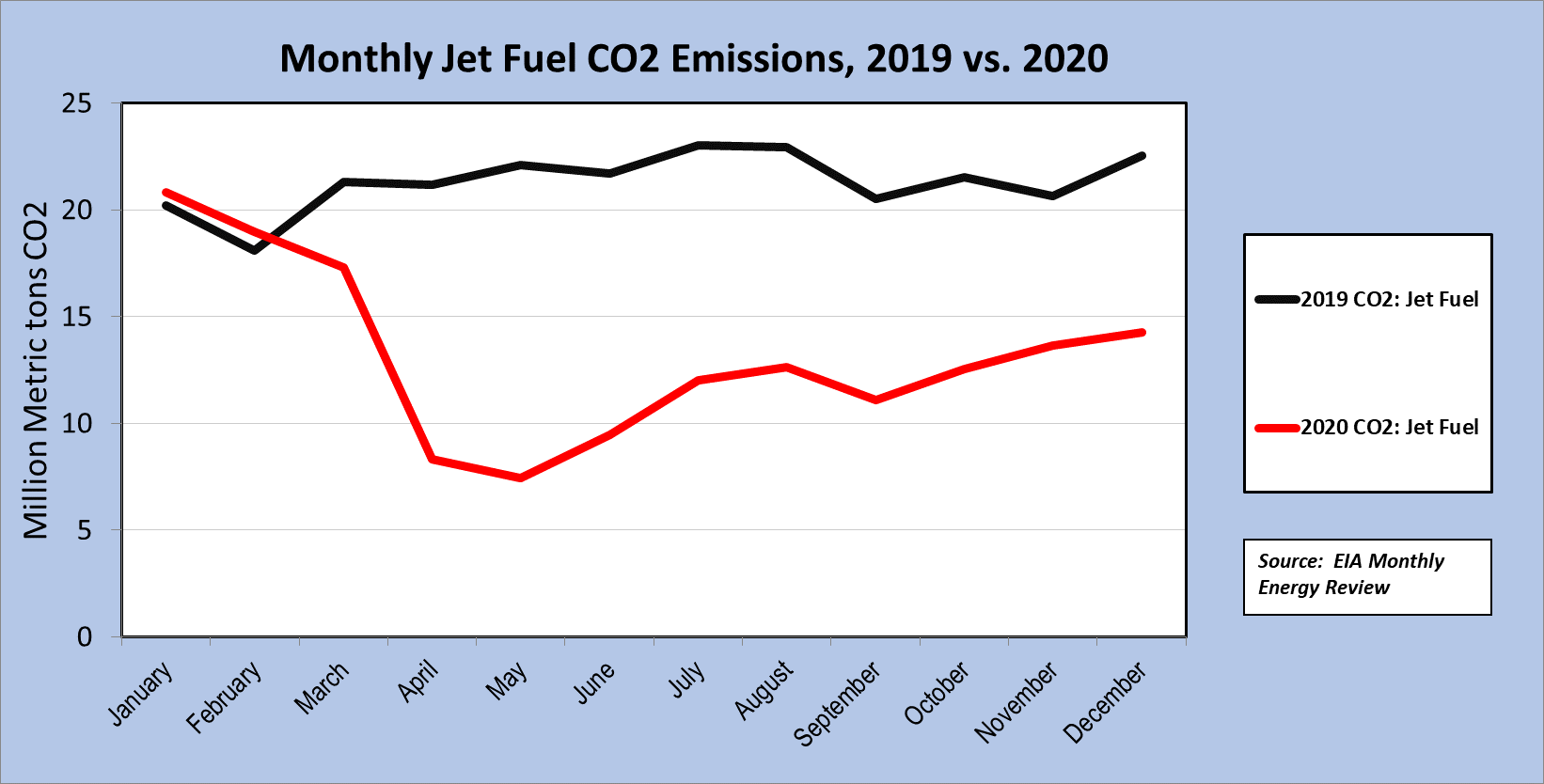In a Fuel for Thought post earlier this month, we took a first full-year look at 2020 Electricity Sales, Generation, and Emissions. On March 25th, the Energy Information Administration (EIA) published its latest Monthly Energy Review, which gives us our first full-year (though still preliminary) look at 2020 CO2 emissions from energy use.
With COVID-19 and all of its related economic impacts, 2020 saw the biggest yearly reduction in CO2 in U.S. history, declining 566 million metric tons (MMT), or 11 percent, from 2019. Not surprisingly, reductions were seen across all economic sectors, but impacts were most pronounced in transportation and electric power, which fell by 15 percent and 10 percent respectively. In terms of energy sources, the greatest year-over-year percentage reductions in emissions came from coal (down 19%) and petroleum (down 14%). Natural gas emissions fell just 2%, as affordable prices continued to make it attractive to customers in both the electric and industrial sectors.
Since 2005 (the approximate peak of U.S. CO2 emissions), we have seen an economy-wide decrease of over 1,400 MMT, nearly 24%. However, with about 40% of these emissions-reductions occurring in 2020 alone due to the global pandemic, it is reasonable to expect some rebound off of those levels in 2021 and 2022, particularly in the transportation sector.
However, as noted in our March 11th post, the decline in 2020 electric power CO2 emissions were driven by the continued transition of power generation away from coal and toward natural gas and renewables. As illustrated in the chart below, these shifts are more durable over the long-term, though to a lesser extent, 2020 electric power CO2 emissions were also affected by lower power sales and generation, due to both COVID-19 economic impacts and milder winter weather.
Transportation
The decline in transportation CO2 emissions in 2020 is stunning, as this sector’s emissions typically change only gradually year to year. About 80 percent of all transportation emissions are from motor gasoline and diesel (i.e., mostly cars and trucks). The remaining emissions primarily stem from aviation, pipelines, and ships.
For cars and trucks, CO2 emissions are driven by three factors: overall vehicle-miles traveled (VMT), average miles per gallon (MPG), and the carbon content of the fuel. VMT tends to increase alongside growing population and economic activity, and MPG gradually improves as newer and higher-MPG vehicles replace older models. The carbon content of fuel changes slowly over time, mainly in the mix of diesel vs. gasoline, but E10 and proposed low-carbon fuel standards may change this going forward.
Needless to say, 2020 was different. COVID-19 and lockdown-related economic impacts affected transportation emissions more than ever on a year-over-year basis. For the transportation sector, CO2 emissions fell a whopping 15 percent in 2020, declining 289 MMT from 1917 MMT in 2019. Since average MPG changes only slowly from year to year, we turn to VMT data for explanation, as it closely tracks CO2 emissions.
The chart below compares 2019 and 2020 fuel consumption and VMT on a monthly basis. Note that in 2019, vehicle miles traveled (gray dashed line) grew from February to March—doubtless due to warmer weather and spring vacations—and continued growing through summer 2019. However, with lockdowns beginning in mid-March of 2020, VMT dropped modestly from February before plummeting 40 percent below April 2019 levels the following month. In fact, the April 2020 VMT of 168 billion miles was the lowest monthly level recorded by the Department of Transportation since January 1992—nearly 30 years ago. With spring break and Easter travel canceled for millions of Americans, emissions fell in concert. The four-month period from March through June accounted for 145 MMT of transportation CO2 reductions compared to 2019. While travel activity recovered somewhat in the following months, it still ran about 10 percent below year-earlier levels.
The historic nature of the 2020 drop in VMT is also striking when we look at longer-term trends. The chart below displays annual transportation VMT and CO2 emissions back to 2005. Other than a modest decline owing to the Great Recession in 2008-2009, changes were extremely gradual.
A final aspect of EIA’s recently released report that warrants attention is the striking decline in emissions from aviation in 2020. In 2019, monthly emissions from jet fuel averaged 21.3 MMT per month, with a summer peak just beyond 23 MMT in July. As shown in the chart below, while 2020 jet fuel emissions exceeded 2019 levels in January and February, they declined rapidly thereafter, reaching a low of 7.4 MMT in May of 2020—more than 66 percent lower than a year earlier, and the lowest recorded monthly total in the history of EIA’s reporting, which dates back to 1973. For the year, emissions from jet fuel in 2020 were 38 percent, or 97 MMT, lower than in 2019.
While the precise pace of our return to normalcy remains unclear, as 2021 progresses we should expect to see transportation activity gradually return closer to long-term patterns, and certainly above those seen in Spring 2020. It follows that transportation CO2 emissions for 2021 will likely be higher than we saw in 2020, but still below 2019 levels.





